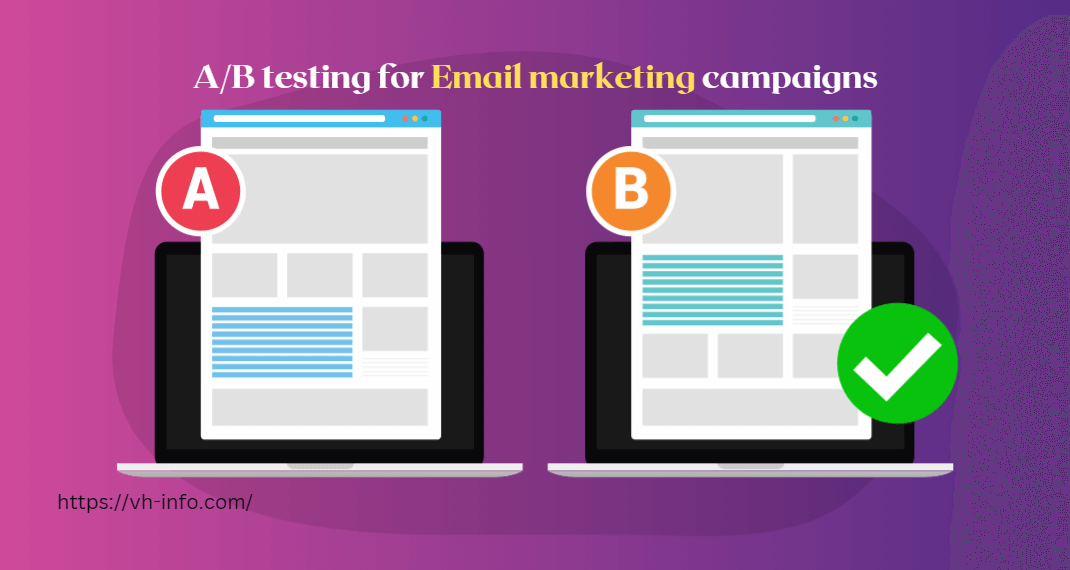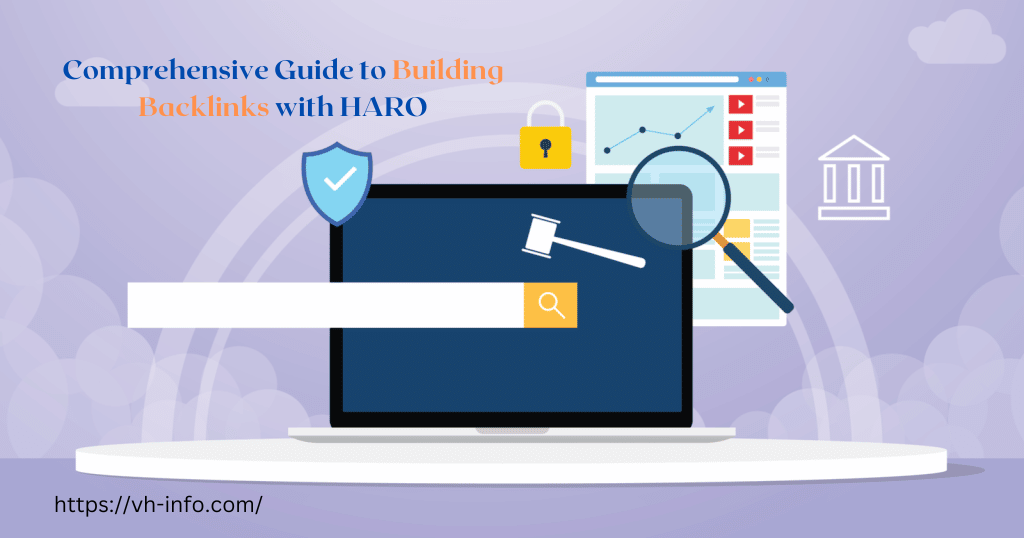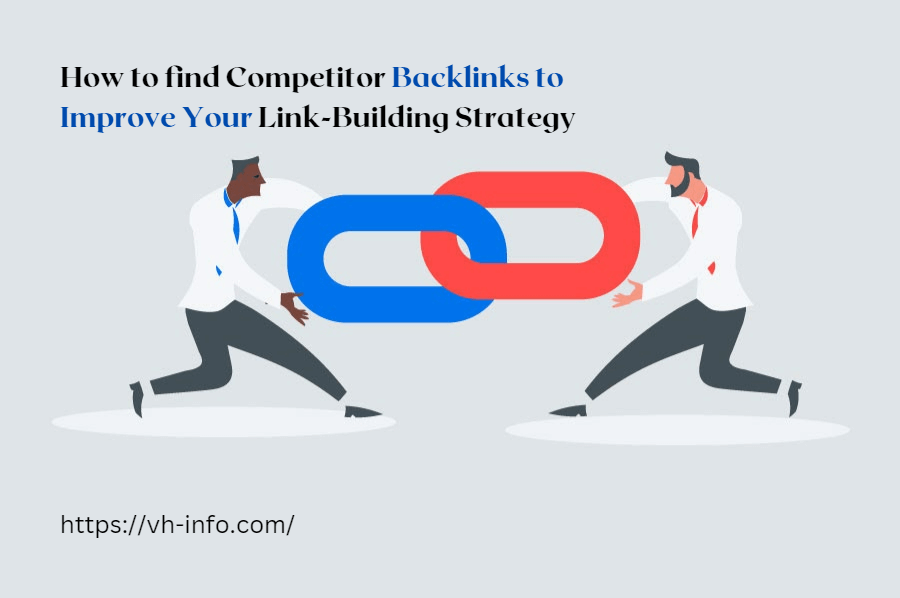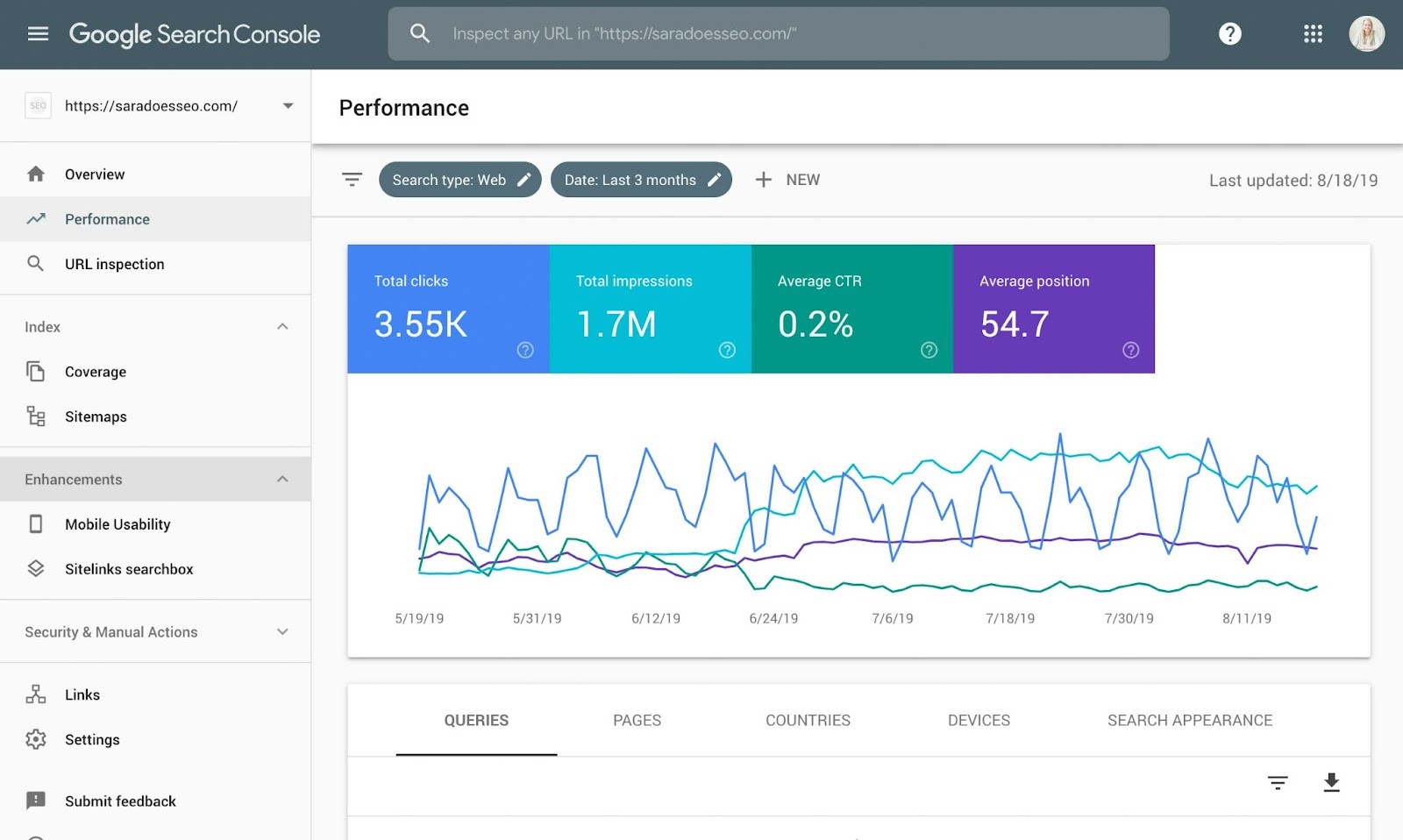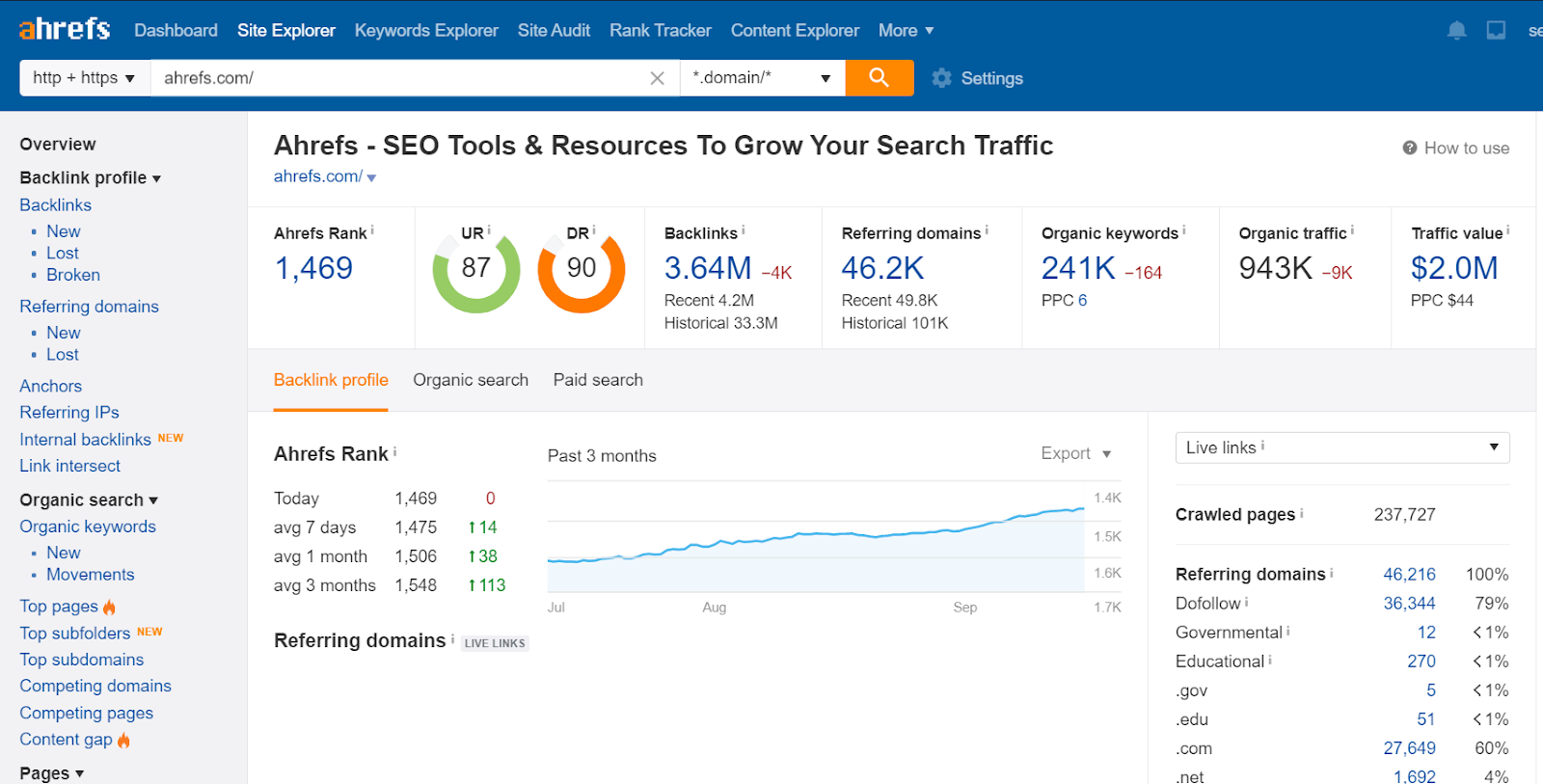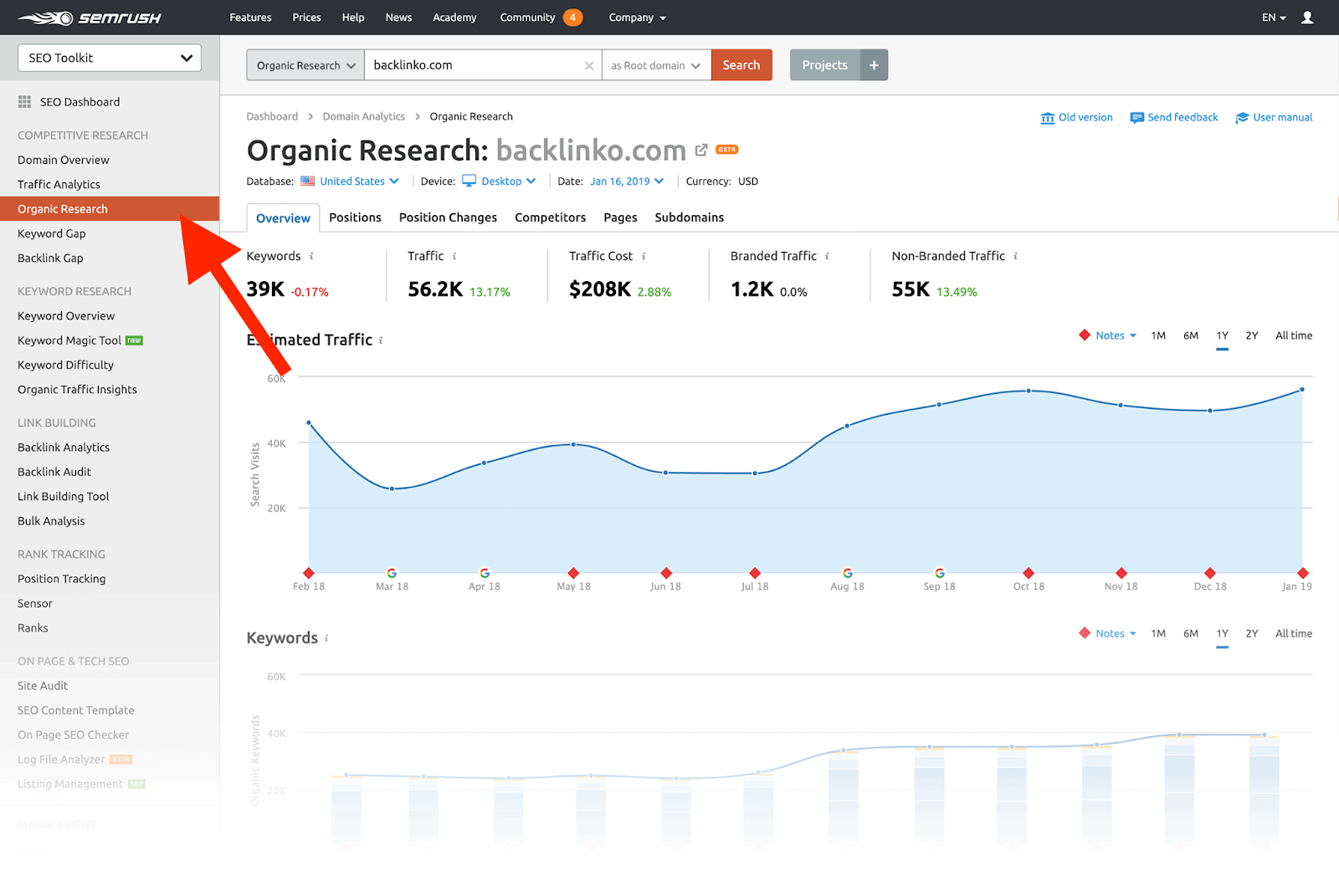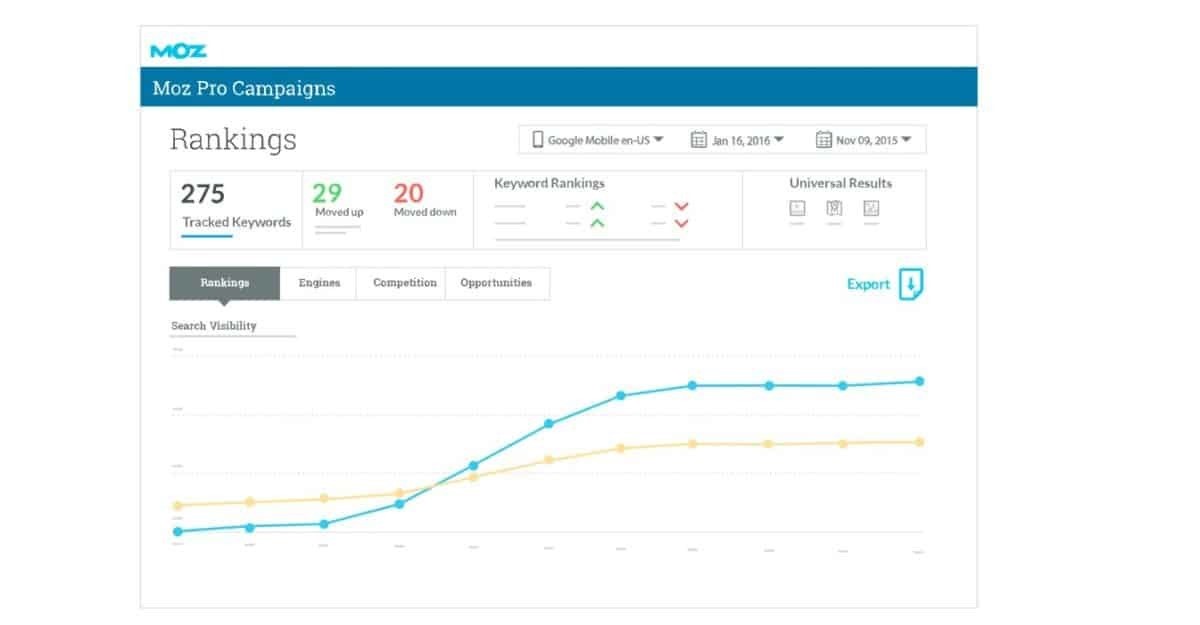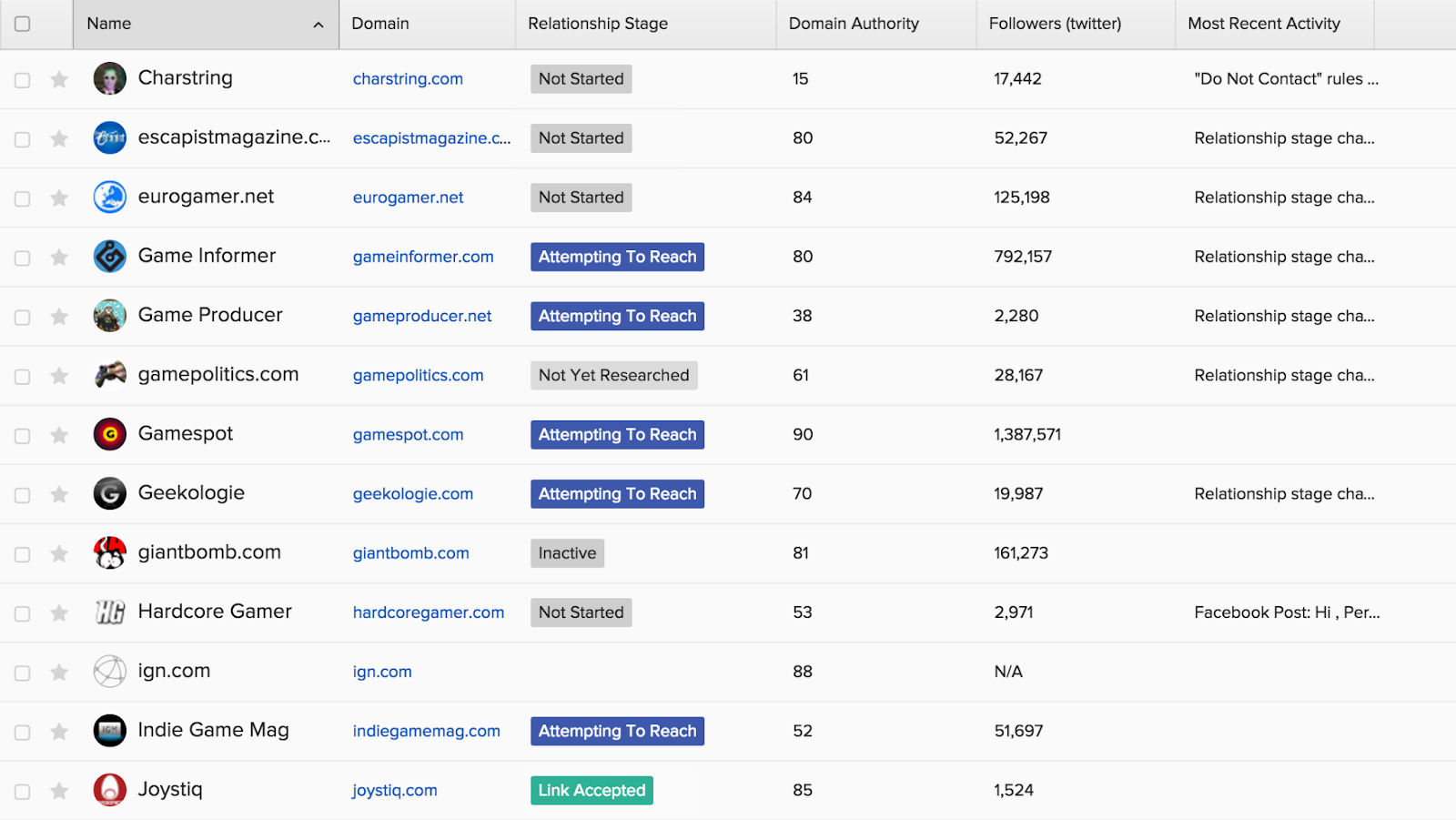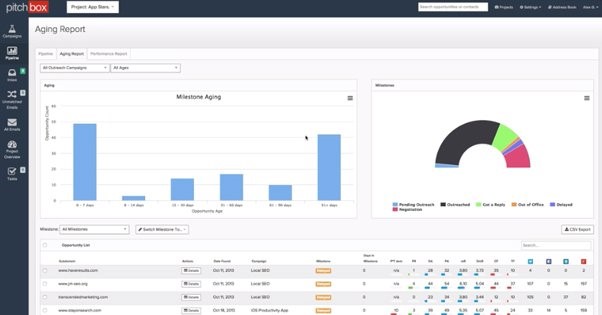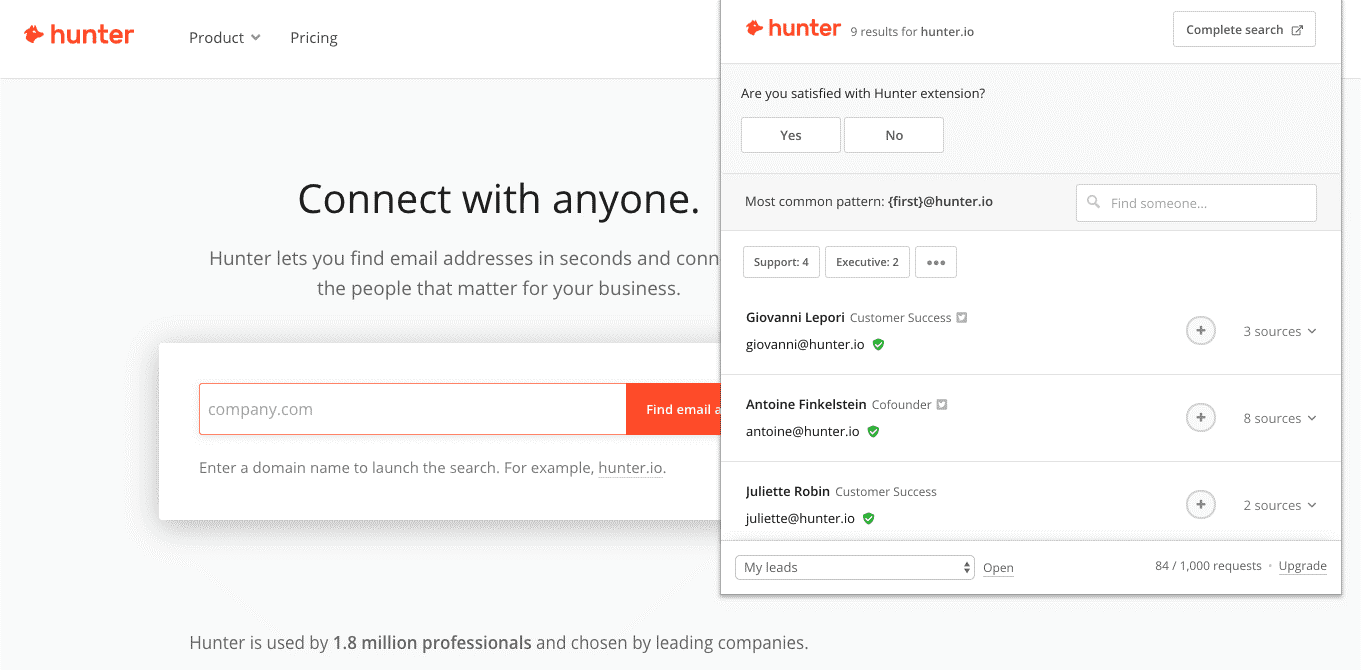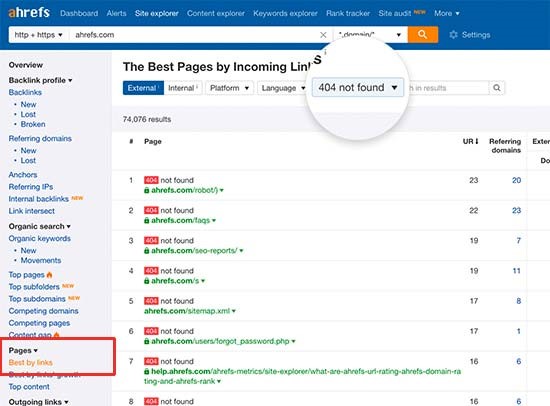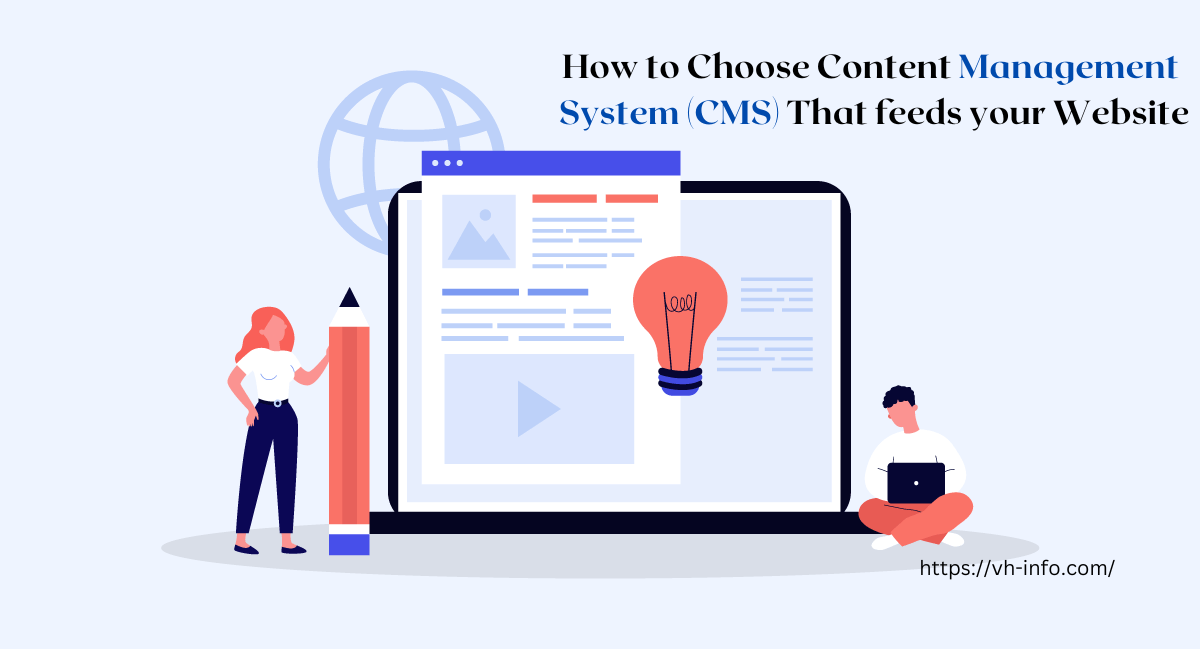Introduction: What is Link Building and Why is it Important for SEO?
Link building is the process of acquiring backlinks from external websites to your own website. In other words, it’s the practice of getting other websites to link to your content.
Link building is an essential component of search engine optimization (SEO) and plays a significant role in determining a website’s search engine ranking.
The search engine algorithms used by Google and other search engines consider backlinks as a measure of the quality and relevance of a website.
The more high-quality backlinks a website has, the more likely it is to rank higher in search engine results pages (SERPs).
Link building campaigns aim to increase the number of high-quality backlinks to a website. The campaign typically involves identifying opportunities for acquiring backlinks, such as guest posting, broken link building, and influencer outreach and executing a strategy to secure those links.
Overall, link building is important for SEO because it helps to establish a website’s authority and increase its visibility in search engine results. A well-planned and executed link building campaign can drive traffic to a website and ultimately lead to increased conversions and revenue.
Understanding Link Quality: What Makes a Good Backlink?
Link quality is an important factor to consider when building a successful link building campaign. A good backlink is one that comes from a high-quality website, is relevant to your website’s content, and is obtained through ethical and natural means
High-quality websites are those that are reputable, trustworthy, and have high domain authority. They typically have a lot of traffic, high engagement levels, and quality content.
Backlinks from these sites are considered valuable because they can help to establish your website’s authority and credibility.
The relevance of the linking site and the linked-to content is also crucial in determining link quality. Backlinks should come from websites that are in the same industry or niche as your website, and the linking content should be relevant to the linked-to content.
This helps to signal to search engines that your website is a reputable and authoritative source of information.
Finally, ethical and natural link building practices are critical in ensuring the quality of your backlinks. Spammy or manipulative tactics can harm your website’s reputation and authority, leading to penalties or even a loss of search engine visibility.
Overall, understanding link quality and building high-quality backlinks is essential for a successful link building campaign and ultimately, improved search engine rankings and website authority.
Developing Your Link Building Campaign Strategy
Developing a link building campaign strategy is an essential step toward achieving successful SEO outcomes. A comprehensive strategy involves several steps, including identifying target keywords, assessing current backlink profiles, analyzing competitors’ backlink profiles, and establishing campaign goals.
To develop an effective strategy, start by identifying your target keywords. This helps to determine which types of websites and pages you should be targeting with your link building efforts. Next, assess your current backlink profile to determine where your current links are coming from and identify any areas for improvement.
Analyzing your competitors’ backlink profiles can provide valuable insights into the types of websites and content that are likely to provide high-quality backlinks.
This information can help to guide your link building efforts and inform your outreach strategy.
Finally, establish clear goals for your link building campaign, such as the number of backlinks you hope to acquire or the increase in website traffic you aim to achieve.
Having clear goals in mind can help to keep your efforts focused and ensure that you are continually working towards improving your website’s SEO outcomes.
In summary, developing a link building campaign strategy involves identifying target keywords, assessing current and competitor backlink profiles, and establishing clear campaign goals.
These steps help to ensure that your link building efforts are targeted and effective in improving your website’s authority and search engine rankings.
Link Building Techniques: The Pros and Cons of Different Approaches
Link building is an essential aspect of search engine optimization (SEO), and it involves the process of acquiring hyperlinks from other websites to your own. There are several link building techniques available, and each approach has its pros and cons.
One approach to link building is through guest blogging. This technique involves writing blog posts for other websites and including links back to your own site.
The pros of this approach are that it can help you reach a wider audience and increase your brand exposure. However, the cons are that it can be time-consuming and may not always result in quality links.
Another approach is broken link building, where you find broken links on other websites and offer a replacement link to your own content.
The pros of this approach are that it can help you build high-quality links and improve your website’s authority. However, the cons are that it can be time-consuming and requires a lot of research and outreach.
Social media link building is another technique that involves promoting your content on social media platforms and encouraging others to share it.
The pros of this approach are that it can help you build brand awareness and increase your website’s traffic. However, the cons are that it can be difficult to measure the success of social media link building and may not always result in quality links.
Finally, there is the approach of buying links, which involves paying other websites to link back to your own site.
The pros of this approach are that it can be a quick and easy way to build links. However, the cons are that it can be costly and may result in low-quality links that could harm your website’s SEO.
Overall, there are various link building techniques available, and it’s important to weigh the pros and cons of each approach before deciding which one to use for your website.Bonus Read: How to improve SEO by using CRM software
The Power of Content: Creating Linkable Assets
The power of content cannot be overstated when it comes to building high-quality links to your website. Creating linkable assets is a critical component of any successful link building strategy.
A linkable asset is a piece of content that is so valuable, informative, or entertaining that other websites are willing to link back to it.
To create linkable assets, you must first identify the types of content that your target audience finds valuable.
This could include blog posts, infographics, videos, case studies, or whitepapers. Once you have identified the types of content that resonate with your audience, you must then create content that is unique, high-quality, and offers value.
The key to creating linkable assets is to focus on creating content that fills a gap in the market. This could be a topic that hasn’t been covered before or a new perspective on an existing topic.
By creating content that offers something unique, you increase the likelihood that other websites will link back to it.
In addition to producing high-quality content, it’s also essential to promote your linkable assets. This could include outreach to other websites, social media promotion, and targeted advertising. The more exposure your linkable assets receive, the more likely they are to attract high-quality links.
In summary, the power of content cannot be underestimated when it comes to building high-quality links.
By creating linkable assets that offer value and fill a gap in the market, you increase the likelihood that other websites will link back to your site, improving your SEO and driving more traffic to your website.
Influencer Outreach: How to Reach Out to Influencers and Get Results
Influencer outreach is a powerful marketing tactic that involves reaching out to individuals who have a significant online presence and a large following in your industry.
The goal is to leverage their influence to promote your brand, product, or service to their audience.
The first step in influencer outreach is to identify the right influencers for your brand. You should look for individuals who have a large following in your niche, are active on social media, and have a track record of promoting products or services similar to yours
Once you have identified potential influencers, you can start reaching out to them. It’s essential to personalize your outreach and demonstrate that you have done your research on their content and audience.
Offer them something of value, such as a free product or exclusive content, and clearly outline what you would like them to do in exchange for the collaboration.
It’s also important to follow up with influencers and build a relationship with them. Don’t expect immediate results, as it takes time to build trust and establish a mutually beneficial relationship.
In summary, influencer outreach can be a powerful marketing tactic when done correctly. By identifying the right influencers, personalizing your outreach, offering something of value, and building a relationship, you can leverage their influence to promote your brand and reach a wider audience.
Building Links Through Guest Posting: How to Do it Right
Guest posting is a link building strategy that involves writing high-quality articles for other websites in exchange for a link back to your own site.
This technique can help you increase your website’s visibility, improve your SEO, and drive more traffic to your site.
To build links through guest posting, you need to follow a few best practices. The first step is to identify high-quality websites that are relevant to your niche and have a strong online presence. Make sure to read their content to get a sense of their style and audience.
Once you have identified potential websites, reach out to them with a personalized pitch that outlines your experience and the topic you would like to write about. Make sure to offer value to their audience and demonstrate that you have done your research on their content and audience.
When writing your guest post, make sure to follow the website’s guidelines and write high-quality content that provides value to their readers. Include a link back to your own site in the author bio or within the article itself, but avoid over-optimizing your anchor text.
In summary, building links through guest posting can be an effective link building strategy when done correctly.
By identifying high-quality websites, personalizing your outreach, and writing high-quality content, you can leverage the power of guest posting to improve your SEO and drive more traffic to your site.
Broken Link Building: Finding Opportunities and Fixing Links
Broken link building is a link building strategy that involves finding broken links on other websites and offering to replace them with a link to your own site.
This technique can help you build high-quality links, improve your SEO, and drive more traffic to your site.
To find broken link building opportunities, you need to use a tool like Ahrefs, Majestic or Screaming Frog to crawl other websites and identify broken links. Look for pages that have high authority and relevance to your niche.
Once you have identified broken links, reach out to the website owner and let them know about the broken link.
Offer to replace it with a link to a relevant page on your own site. Make sure to offer value to their readers by providing high-quality content that is relevant to their audience.
When fixing broken links, make sure to use the right anchor text and link to a relevant page on your own site. Avoid over-optimizing your anchor text and make sure to provide value to the website’s audience.
In summary, broken link building can be an effective link building strategy when done correctly. By finding broken link building opportunities, reaching out to website owners, and fixing broken links, you can build high-quality links, improve your SEO, and drive more traffic to your site.
Measuring Success: How to Track and Analyze Your Link Building Campaign
Measuring the success of your link building campaign is crucial to understanding the impact of your efforts and identifying areas for improvement. To track and analyze your link building campaign, you need to use a combination of metrics and tools.
The first step is to set specific goals and KPIs for your campaign, such as the number of links you want to acquire, the domain authority of the sites you want to target, and the amount of referral traffic you want to generate.
Once you have established your goals, you can use tools like Google Analytics and Ahrefs to track your progress and analyze your results.
Monitor your referral traffic, backlink profile, and domain authority to measure the impact of your link building efforts.
It’s also important to analyze the quality of your links, including the domain authority, anchor text, and relevance of the linking site.
Make sure to avoid low-quality links that could hurt your SEO and focus on building high-quality links from relevant, authoritative sites.
In summary, measuring the success of your link building campaign is essential to understanding the impact of your efforts and improving your strategy over time.
By setting specific goals, using the right tools, and analyzing your results, you can track the effectiveness of your link building efforts and make data-driven decisions to improve your SEO and drive more traffic to your site.
Conclusion: Building a Successful Link Building Campaign for Long-Term SEO Success
In conclusion, building a successful link building campaign is critical for achieving long-term SEO success. By implementing the best practices and techniques outlined in this article, you can improve your website’s visibility, drive more traffic to your site, and increase your search engine rankings.
It’s essential to approach link building strategically and tailor your efforts to your business goals and target audience.
By identifying high-quality websites, personalizing your outreach, creating high-quality content, and monitoring your results, you can optimize your link building strategy over time and drive more traffic and leads to your site.
Remember, link building is not a one-time effort but a continuous process that requires ongoing monitoring and optimization.
By staying up-to-date with the latest trends and best practices and constantly refining your approach, you can build a strong, sustainable link profile and achieve long-term SEO success.
Rohit Ambani
Rohit is a SEO expert, Ninja link builder and Rockstar of vh-info. He loves to talk about SEO, Link building. In his free time, he likes to watch reels on instagram. You can always reach out to Rohit on linkedin.



